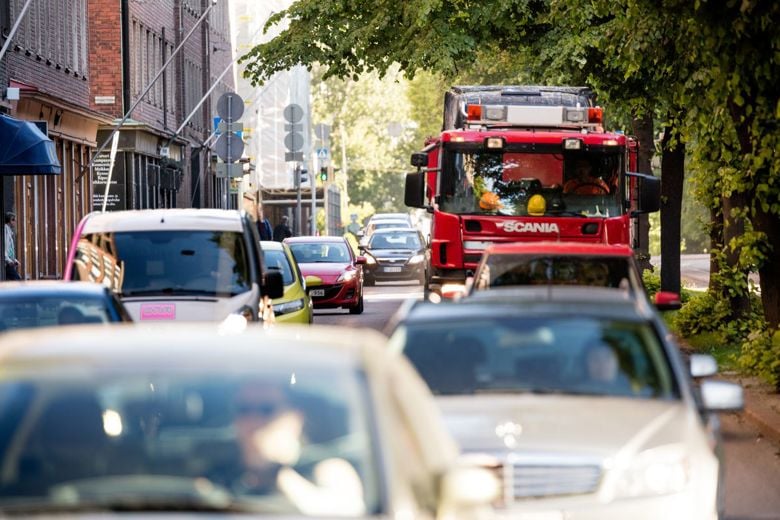Traffic exhaust gases reduce air quality

In the Helsinki metropolitan area, traffic exhaust gases and street dust reduce the quality of breathing air the most, because they are discharged close to our breathing height.
Car exhaust gases contain a large number of different pollutants in gaseous and particulate form:
- Gaseous pollutants include nitrogen dioxide (NO2), nitrogen oxide (NO), carbon monoxide (CO), and various volatile organic compounds (VOC), such as benzene.
- The fine particles (PM2.5) in exhaust gas, in turn, consist mainly of black carbon (BC) and many organic compounds, such as polycyclic aromatic hydrocarbons (PAHs).
- In addition, there are some different kinds of metal compounds in the exhaust particles.
- The particles in the traffic exhaust gas are very small in size and also include a lot of nanoparticles.
Weather can hinder the dilution of exhaust gases
In busy areas, the air quality varies clearly depending on the rhythm of traffic. Concentrations are usually highest on weekdays during the morning rush hour. This is the period with the most traffic and the weakest conditions for emissions to mix. Exhaust gas concentrations are on average higher in the winter than in the summer. Weather conditions that are unfavourable for the spread and dilution of air pollutants occur more frequently in the winter.
Emissions from traffic may accumulate in the air at exceptionally high concentrations when there is little wind in the event of thermal inversion:
- In thermal inversion, the air close to the ground becomes colder than the air higher up when the night is calm and clear.
- The heavy, cold air below is trapped close to the ground, and the emissions discharged into it cannot mix with the upper layers of air.
